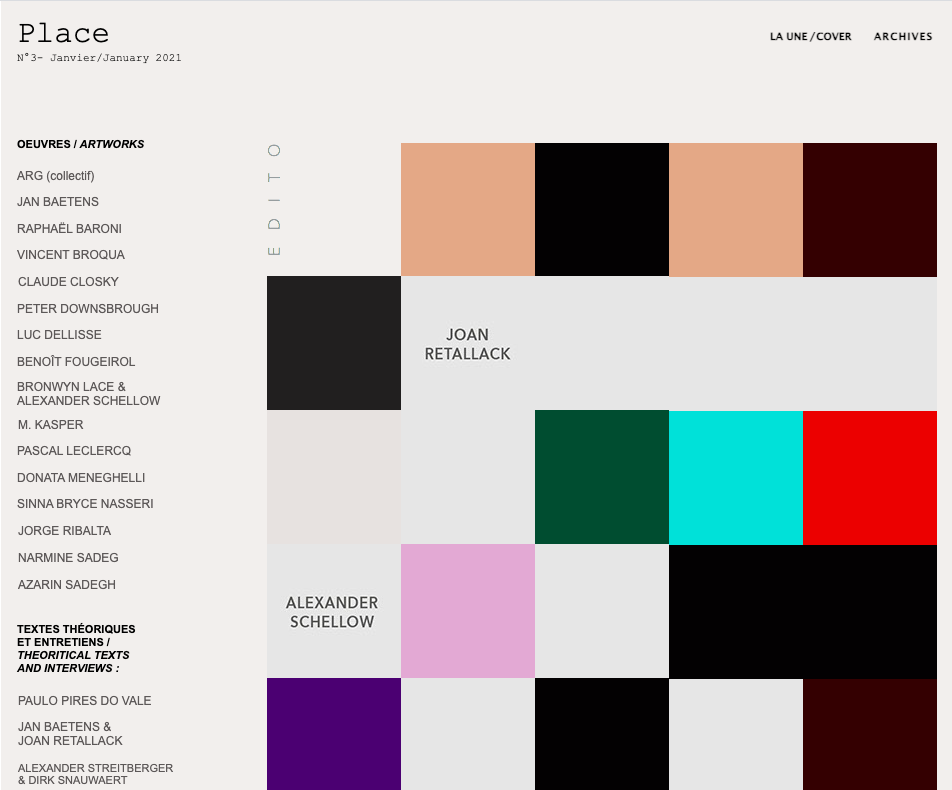Experimental Writing and Beyond — Joan Retallack Interviewed at Place

The following is an excerpt from Jan Baetens’ interview with Joan Retallack, “Experimental Writing and Beyond An interview with Joan Retallack,” in the January 2021 issue of Place magazine.
Baetens: …[Y]ou repeatedly draw attention to a certain analogy between scientific experimentation and poetic writing. The scope of this analogy seems clear, but what are the limits of this analogy, and how do you treat them in your own writing?
Retallack: […]
7. As someone who has had since childhood a ridiculous number of intense interests, I was excited as undergraduate philosophy student to discover Francis Bacon’s early 17th century, empirically simple (literally down to earth) guide to his Novum Organum, or True Directions Concerning the Interpretation of Nature. The problem of the intrusion of one’s subjectivity (pathos overcoming ethos and logos) into what should be grasped as much as possible in its own distinctive nature is one of many things treated in his beautiful, cautionary and inspiring aphorisms. (The poetry is already there.) I can’t resist these two excerpts:
XLIX. The human understanding is no dry light, but receives an infusion from the will and affections; whence proceed sciences which might be called “sciences as one would.”
L. All the truer kind of interpretation of nature is effected by instances and experiments fit and apposite; wherein the sense decides touching the experiment only, and the experiment touching the point in nature and the thing itself.
Bacon is advocating a passionate observational rigor that, far from desiccating one’s mind, redirects the will and affections with the experimental procedure that can mediate contact with “the thing itself.” This is a method as essential for early gravitation and motion studies with objects tossed from tower windows or balls rolled down inclined planes as it is for Quantum Physics double-slit experiments probing particle/wave duality with a beam of light. And, it also pertains to poetry in which the procedure is enacted with and on lettristic/ linguistic material. Language “touching the point in nature and the thing itself” is something I can think about in Wittgenstein’s sense of language as a form of life inseparable from how we are doing things with words, which is in turn nseparable from the living we and others are doing and who and what we are. And what everyone is doing is the composition of the time in which we all are living, as Gertrude Stein (herself a product of scientific interest and training) put it in her 1926 essay Composition as Explanation, and many elsewheres.
8. Borrowing from procedural methodologies, devising procedures to be enacted by vocabularies and lettristic logics, begins with questions I want to explore in a poetic context and must admit, on the scale of the poem, some aspect of the complexity and indeterminacy of every phenomenon touching our lives. That means, as John Cage developed it, kinds of precision that admit chance in what chaos theorists have called “pattern bounded indeterminacy.” I first encountered this approach to aesthetic composition in Cage’s rigorous “chance operations.” As for the scope and limits of all this, I feel that’s largely determined by my choices, which are themselves determined by the nature of my interests, the nature of the puzzle I’m addressing; often something I’m also thinking through in essay form, or in my visual work/play. In any case, what for me constitutes an experiment of any kind is interrogatively driven from beginning to end — a poethical wager.
Curious about parts 1 through 6 of this response? Keep reading.
